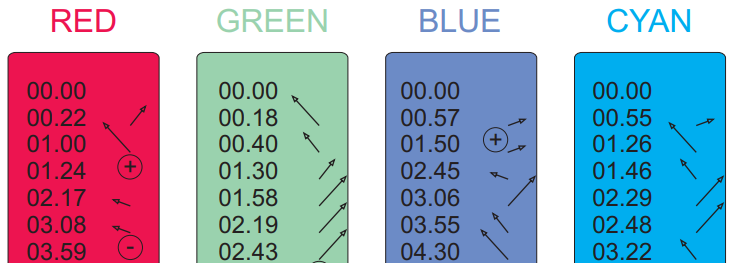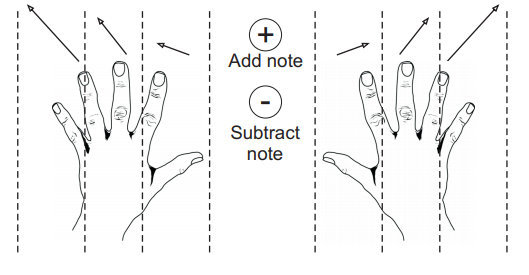In these times of limited interaction I’ve been trying to identify or develop ideas around how to perform music publicly whilst obeying the hygiene rules and empowering as many people as possible. Promoting the usual format of band and audience wouldn’t work at the moment in our regular venues.
Why?
My thoughts turned to making the audience the performers and being inclusive by not requiring any musical skills at all. We tried this a few weeks ago at the Queens Head in Monmouth, staging John White’s “Drinking and Hooting Machine” which was a great success. This time I wrote a piece for “Audience and 4 keyboards”. This seems to have matched, if not exceeded the previous event in terms of empowerment, creativity and simply having a good communal time. We performed it on 21st October 2020 in Monmouth.
An excerpt from 9 minutes in ….
The Set-up
In order to observe social distancing I developed a scheme whereby four keyboards were positioned in a line. The only functional requirements of the keyboard being that it had organ patches so they could play a continuous note when a weight was applied to a key. I had to develop some special weights so that they were heavy enough to fully press a key, thin enough to fit any of the “white notes” and have a groove so that they would lock onto the “black notes”.

These four keyboards were then fed into a mixer. This allows them to be selectively sent to a series of effect pedals so I could sculpt the sound prior to sending to the PA system. For those who like these things I used a WahWah pedal, an Electroharmonix “Ring Thing” ring modulator and then a stereo feed from that into a stereo multi-effects pedal mostly using tremolo, flange and phase functions.
The “players” were the audience divided into four groups corresponding to the four keyboards. For convenience Red, Blue, Green, Cyan. Each group had a stopwatch.
The Score
You can download the score for free here (For Audience and Four Keyboards). Please feel free to use it for your own production.
The Process
The “Score” consists of four lists of times with an associated action at that time. The sound sculptor sets up the original chord and then gives a signal for everyone to start their stopwatch. From then on the process consists of one person, at a prescribed time, approaching their specific keyboard. Using any weight on the keyboard, move it in the instructed direction.

I’ve used the concept of “pitch vectors”. The notes themselves don’t matter it’s the direction of pitch change that is important. Players are instructed to move a small, medium or large interval (all within the span of a hand) and occasionally add or subtract a weight. This latter operation is defined as ” Note Density” in the original score.

There is also a “Volume Profile” which is the responsibility of the sound sculptor, as they have control of the mixer.
Finally, after 15 minutes, the sound sculptor moves the weights to resolve the final chord and performs a final sound modulation for the piece to fade.
The Result
As always with artistic activity the results are multi-level. The piece created an interactive creative process for a group of disparate people. They felt empowered, bonded, amused, bemused, enlightened, and many other values in a time when such activity is rare. Both at this performance and the previous “John White” piece we’ve seen people completely out of their comfort zone become engaged and delighted at being part of the process. They had fun! From what I could tell people went home in a more positive state of being. Whatever that may mean, I think it was the case.
Musically here’s the capture, straight from the mixer
[sibwp_form id=1]
